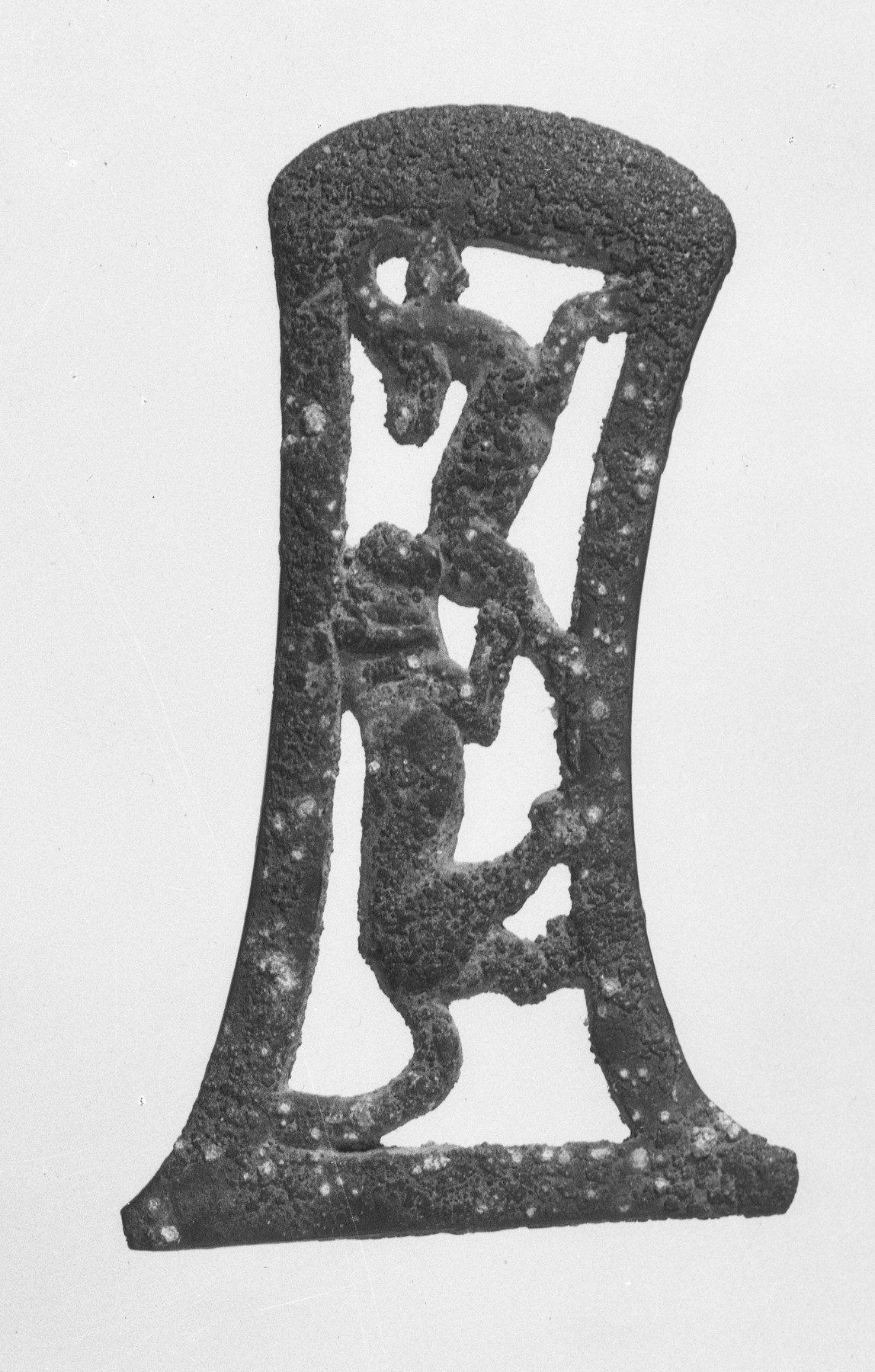Openwork Axe Head with Lion Attack
This openwork axe-head depicts on both its sides a lion seizing a goat by the hindquarters, while the goat turns back to look at the lion. The lion and aoat both possess incised features, and there is some modeling on the faces of the lion. Both of the two longer sides of the axe-head curve inwards, though not to the same degree (the bottom side is curved more than the top), resulting in an asymmetrical axe-head with a skewed cutting end. The handle and cord attaching the axe-head to the handle are modern.
There are small orange-like patches on the lion on both sides of the axe-head; there is more on the side where the lion is facing left. There are similar patches on the inside of the border of the axe-head. There appears to be little wear on the cutting surface of the axe-head.
Provenance
Provenance (from the French provenir, 'to come from/forth') is the chronology of the ownership, custody, or location of a historical object. Learn more about provenance at the Walters.
Dikran Kelekian, New York and Paris [date and mode of acquisition unknown]; Henry Walters, Baltimore, 1928, by purchase]; Walters Art Museum, 1931, by bequest.
Conservation
| Date | Description | Narrative |
|---|---|---|
| 10/20/1998 | Examination | survey |
Measurements
Overall: 17 11/16 x 3 13/16 x 11/16 in. (45 x 9.7 x 1.8 cm)
Credit Line
Acquired by Walters,1928
Location in Museum
Not on view
Accession Number
In libraries, galleries, museums, and archives, an accession number is a unique identifier assigned to each object in the collection.
In libraries, galleries, museums, and archives, an accession number is a unique identifier assigned to each object in the collection.
54.1514


